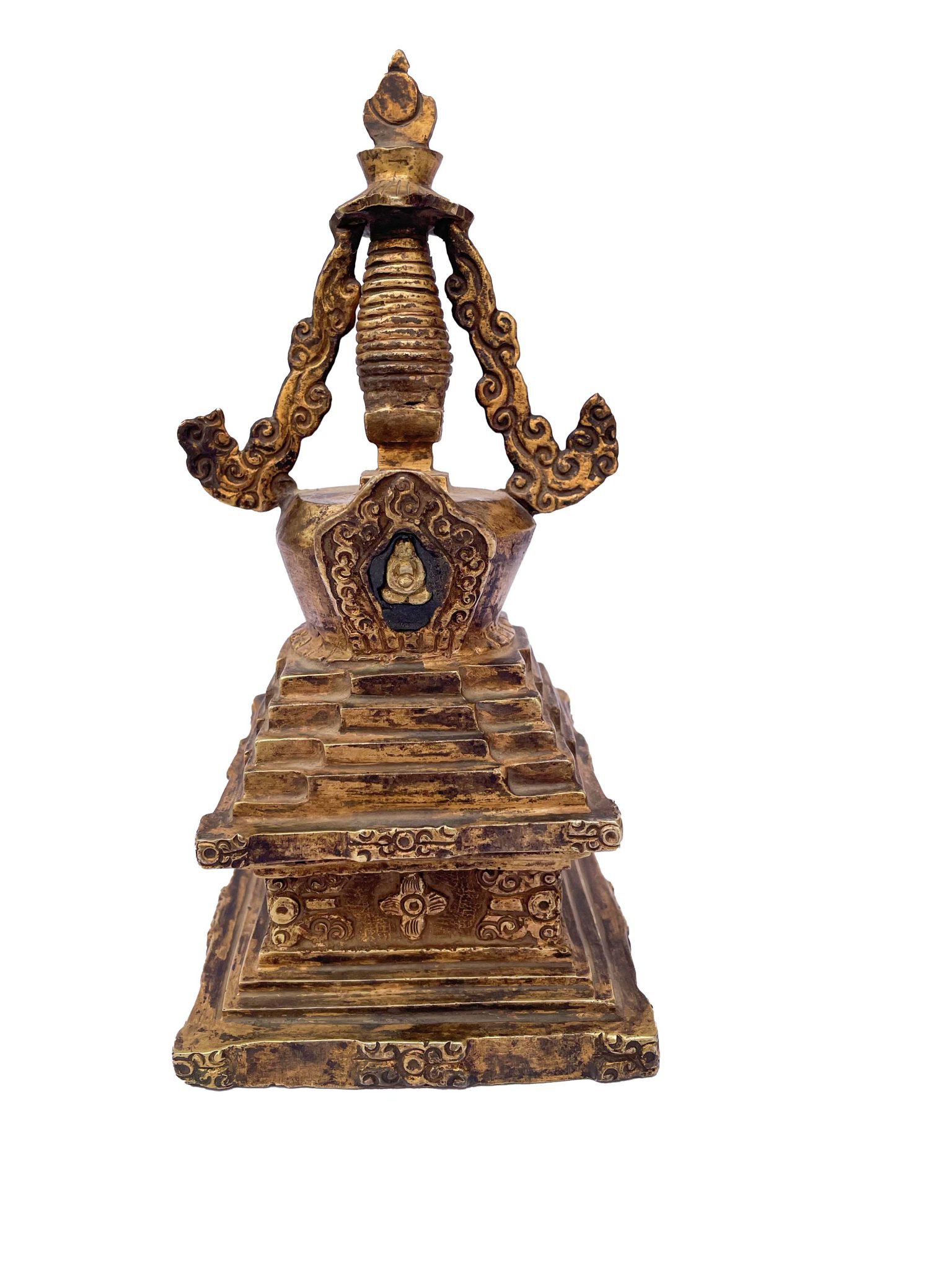






8 Buddhist Stupa Set
Immerse yourself in the serene beauty of the Buddhist Eight Stupa Set Buddhas, a captivating assemblage that embodies the essence of Vajrayana Buddhism. Each stupa, meticulously crafted from chocolate oxidized copper, serves as a spiritual symbol within the Buddhist tradition, representing the path to enlightenment and the stages of spiritual development.
This exquisite set not only showcases the skilled artistry of Himalayan craftsmen but also invites contemplation and meditation. The detachable design allows for a dynamic display, encouraging interaction and personal connection with each figure. Measuring 10 x 6 x 6 cm, this collection is a harmonious blend of form and function, making it a perfect centerpiece for any sacred space or art collection.
The weight of 2128 grams reflects the substantial craftsmanship involved in its creation, ensuring durability while maintaining an ethereal aesthetic. Each piece resonates with the rich cultural heritage of the Himalayas, evoking a sense of peace and tranquility that transcends the material world.
The 8 Stupas are
Lotus Stupa Tib. Pepung Chorten The main body of this stupa appears in the form of a lotus and symbolizes Buddha’s birth in Lumbini.
Enlightenment Stupa Tib. Jangchub Chorten This stupa symbolizes the full development of mind, the state of a Buddha. It was built by the Dharma king Bimbisara, honoring Buddha’s enlightenment in Bodhgaya. On the evening before reaching enlightenment, Buddha Shakyamuni removed the last subtle veils and obstacles in his mind, which is also represented in this stupa.
Stupa of Many Doors Tib. Taschi Gomang Chorten This stupa represents the Dharma, the teachings of the Buddha about the way things are. It is also called “Wisdom Stupa” and was built on the occasion of Buddha’s first teaching “The four noble truths” which he gave in Sarnath/Varanasi. The stupa represents the threefold turning of the wheel of Dharma and contains all teachings Buddha gave.
Stupa of Great Miracles Tib. Chotrul Chorten This stupa represents the miracles performed by Buddha when he converted the “followers of wrong views” (non-Buddhist masters) through his power of miracles. A person named Lisabi built this stupa in the Jetavana Grove in Shravasti.
Stupa Descent from God Realms Tib. Lhabab Chorten Buddha gave teachings to his mother in the heaven of thirty-three gods (Trayastrimsha Heaven). Buddha’s descent from this realm back to earth is symbolized by this special stupa with three ladders on each side. The first stupa of this kind was built in Samkashya.
Stupa of Reconciliation Tib. Yendum Chorten The Buddha’s cousin, Devadatta, created a division among the practitioners. This stupa was constructed in Rajgir to commemorate the reconciliation of the Sangha.
**Stupa of Complete Victory** (Tib. Namgyal Chorten) – Just prior to his passing, the Buddha prolonged his life by three months at the request of his disciples who wished for him to remain with them. This event took place in Vaishali. The stupa is also renowned for its healing properties.
The **Paranirvana Stupa**, known in Tibetan as Nyangde Chorten, represents the Buddha’s departure from the cycle of conditioned existence (death) in Kushinagara. The stupa’s central structure is shaped like a bell, symbolizing the Buddha’s ultimate wisdom.

















